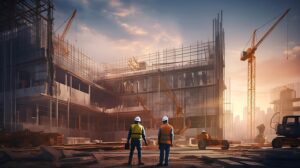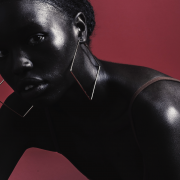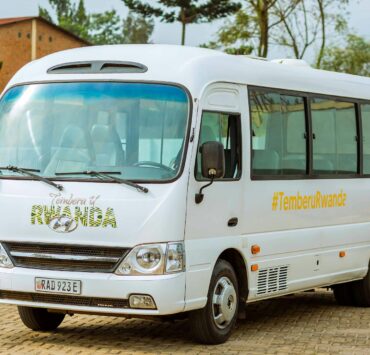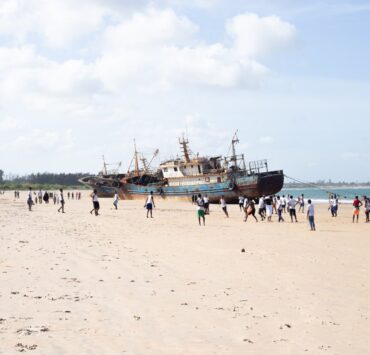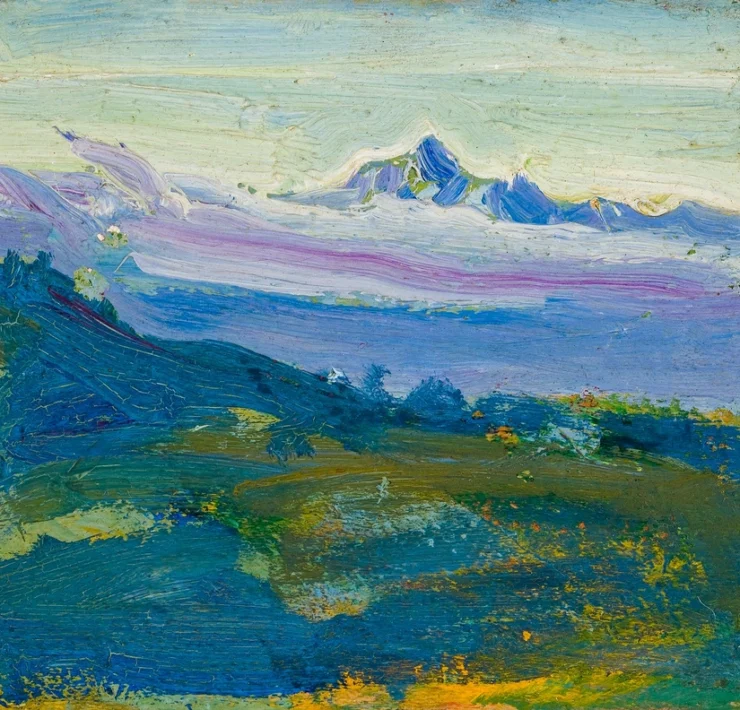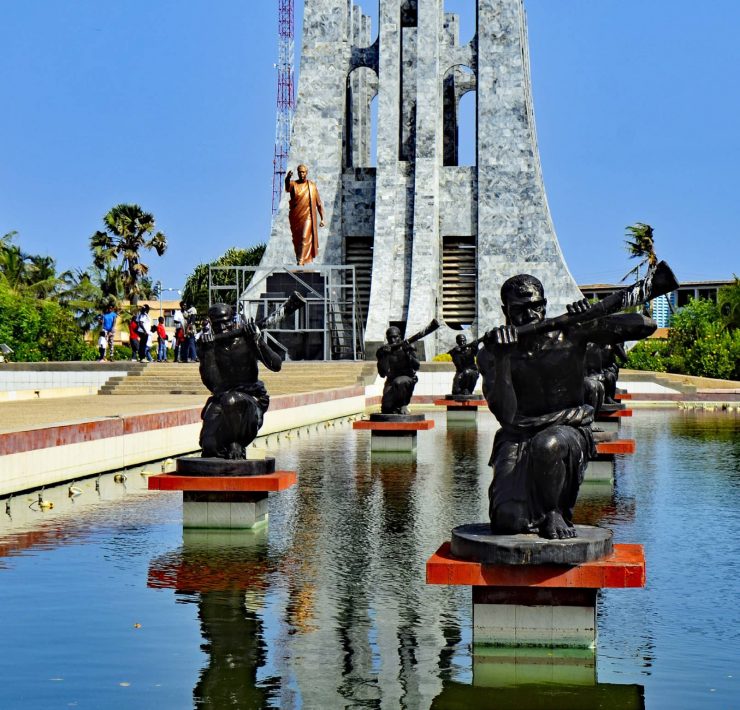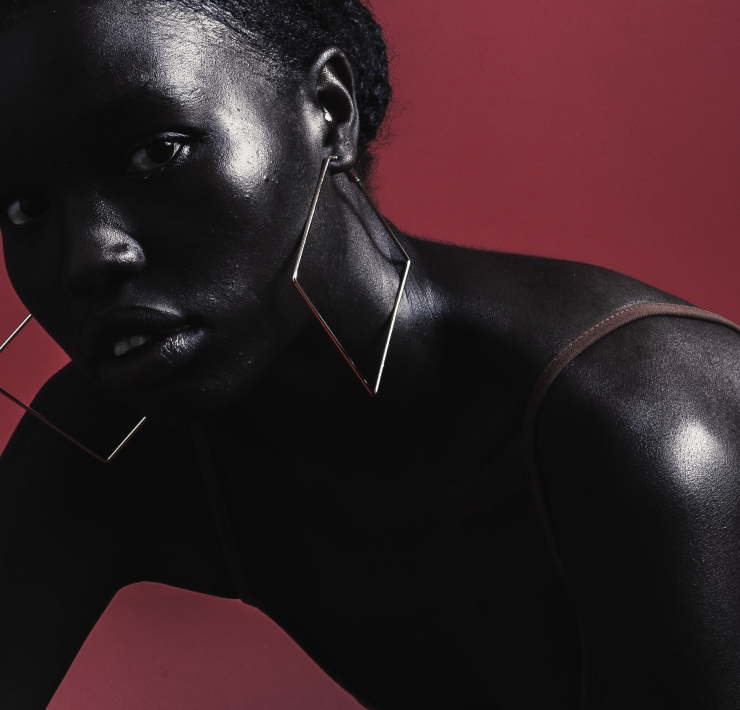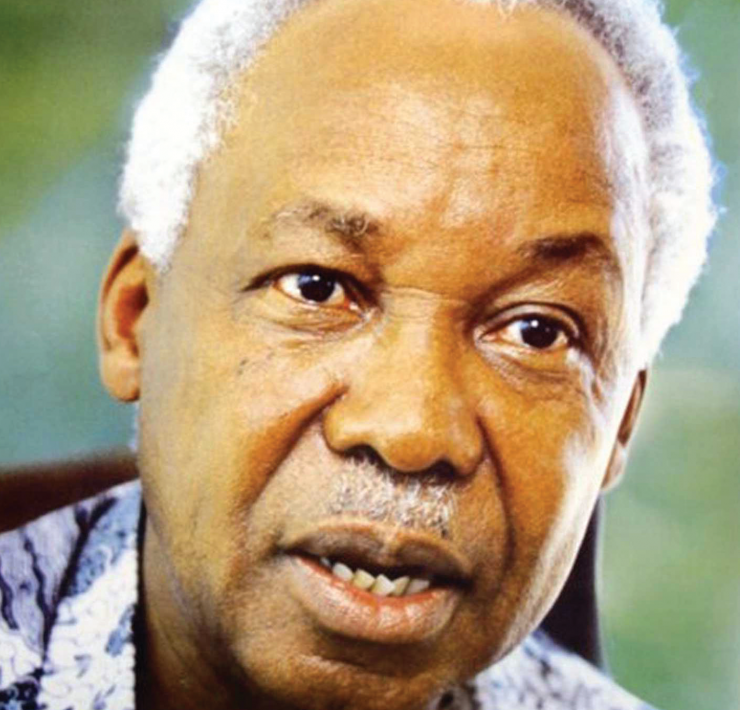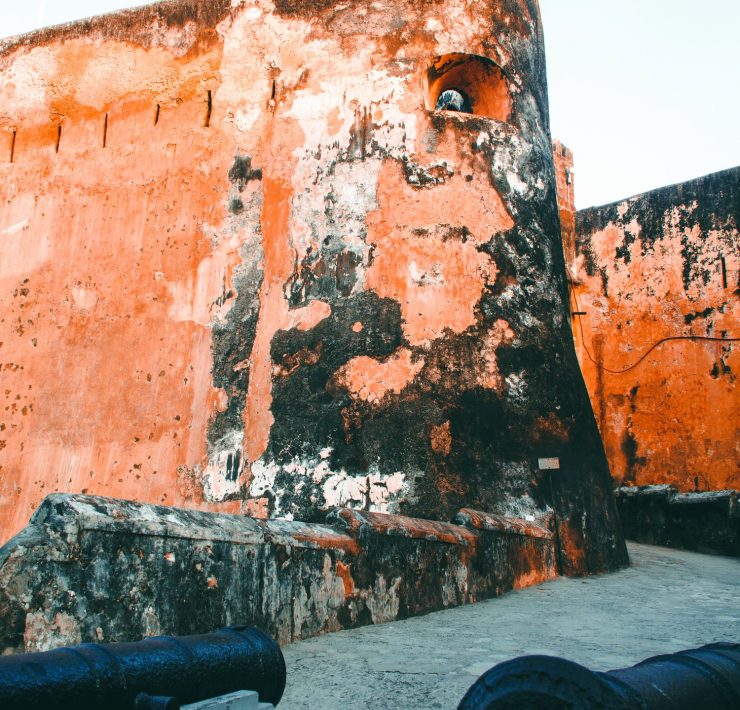Beyond the Monuments of Mashujaa
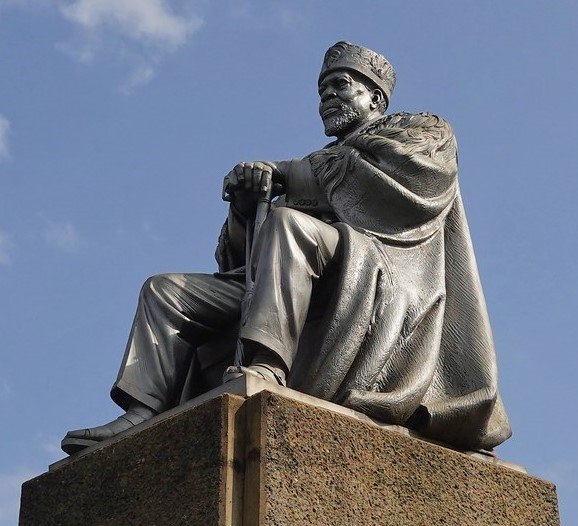
Mr. Wanyama Ogutu is a scholar in the Master of…
The people of Kenya celebrate Mashujaa Day on 20th October every year. Initially, it was Kenyatta Day, a celebration of Kenya’s founding president, Jomo Kenyatta, among other freedom fighters, such as Dedan Kimathi. After the promulgation of the constitution in 2010, the name changed to “Mashujaa,” which means “heroisms or heroes” in Swahili. The holiday is popped with legendary patriotic Swahili songs such as “Kenyatta Aliteswa Sana,” “Kenya Nchi Yetu,” “Kenyatta Baba Yetu,” and “Fimbo la Nyayo,” among many local songs. The current president of Kenya dedicates the day to Mashujaa, who made significant contributions to the struggle for independence. Additionally, he unveils significant monuments, sites, museums, and heroes’ homes. On this day I stood before the 18-foot sculpture in the newly refurbished Department of Fine Art at Kenyatta University. It is a gigantic monument of the Shujaa Jomo Kenyatta waving a flywhisk and holding his walking stick. The pose suggests he is walking toward Murima (his naïve home in Mount Kenya). The sculpture wears a famous big leather jacket, which symbolizes fighting for Kenyan independence. The body posture displays a man rising from the infix of Kapenguria’s detention and ready to fly the flag of the Republic of Kenya.
At the compound of Kenyatta International Conference Centre in Nairobi (KICC), there is a 12-foot-seated bronze statue of Jomo Kenyatta in a pensive pose. He wears African ceremonial regalia and a famous cap. His hands rest on a walking stick with his famous flywhisk. He is also wearing traditional sandals without socks. The statue looks directly over the skyline of Nairobi. Its backdrop is the Supreme Court of Kenya, a symbol of the rule of law and constitutional legal authority. At its front is the parliament of Kenya, a symbol of national unity. In the same parliament is a replica of the statue of Jomo Kenyatta, like that of the Department of Fine Art at Kenyatta University. Who will eloquently proclaim the greatness of Shujaa, Baba Jomo Kenyatta?
“Directly in front of me, the monument to a monumental man, George Washington, father of our country. A man of humility who came to greatness reluctantly. He led America out of revolutionary victory into infant nationhood. Off to one side, the stately memorial to Thomas Jefferson. The Declaration of Independence flames with his eloquence. And then, beyond the reflecting pool, the dignified columns of the Lincoln Memorial. Whoever would understand in his heart the meaning of America will find it in the life of Abraham Lincoln.
Beyond those monuments to heroism is the Potomac River, and on the far shore are the sloping hills of Arlington National Cemetery, with its row upon row of simple white markers bearing crosses or Stars of David. They add up to only a tiny fraction of the price that has been paid for our freedom.”
My sentiment about Kenyatta was expressed by U.S. President Ronald Reagan at the West Front of the Capitol in Washington, D.C. He praised George Washington, Thomas Jefferson, and Abraham Lincoln highly, portraying them as American heroes. He described them as humble, true patriots, and selfless leaders. At the end of his inauguration speech, President Reagan received enthusiastic applause from the crowd.
On the streets of Pennsylvania, there is a full-size statue of a charming U.S. President John F. Kennedy. The sculpture captures a smile and a walking pose holding his book “Profile of Courage.” He is an American hero and charismatic leader who served as a symbol of new frontier leadership. Along the National Mall in Washington, D.C., there is a large stone sculpture of Martin Luther King Jr. He stands tall, confidently demanding the end of black segregation. The achievement of Luther King Jr. continues to inspire countless individuals to strive for a purpose in life. The iconic legacies of Washington, Jefferson, Lincoln, Martin, and Kennedy have been translated into various materials for sculptures, including wood, stone, bronze, metals, and cement. These ionic public figures have also been represented in paintings, drawings, portraits, figurines, stamps, currency, coins, and busts, among others.
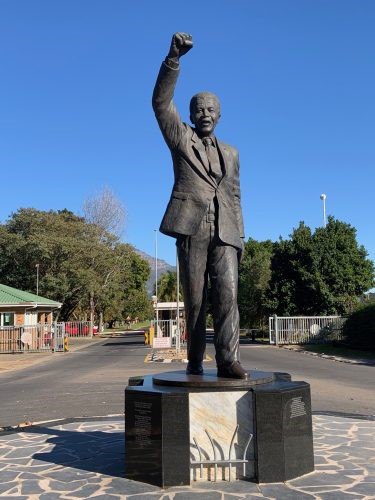
Source: Wango (2021) The East African Journal –
Early this year, the outgoing chairperson of the African Union (AU), Mr. Moussa Faki, unveiled the statue of the late Julius Nyerere at the African Union headquarters in Addis. Mr. Faki celebrated President Nyerere for championing the legacy of socialism. The statue depicts Nyerere waving his famous signature, “Ujamaa na Uzalendo.” The Ujamaa philosophy fostered togetherness and improved social welfare. Many miles away outside Drakenstein Prison in South Africa is an iconic statue of a heroic leader: Nelson Mandela, former president of South Africa. The statue shows President Mandela raising his fist high with a smile coming out of prison, symbolizing the long road to freedom. He is recognized for his indelible role in ending the apartheid reign and ushering in multiparty democracy. The monument reflects the spirit of forgiveness, humility, and the big picture. A few kilometers outside the Parliament of Lilongwe is a monument to President Bingu wa Mutharika. He gives a hand salute gesture, “Let the work of my hands speak for me.” President Bingu is renowned for not tolerating criticism and abusing the rights of Malawians. In Kenya, the statue of President Jomo Kenyatta is criticized for promoting ethnic superiority among Kenyans.
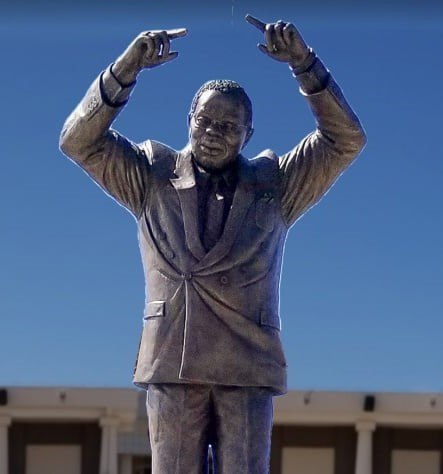
Source: Wango (2021) The East African Journal – EANSO
US President Donald Trump called for peace among the Americans when a Minneapolis police officer asphyxiated George Floyd by kneeling on his neck. The video footage streamed Floyd lying helpless on the ground under the police car. He was sweating and oozing blood from his mouth and nose. He wailed multiple times, “I can’t breathe!” The brutal event led the protesters to turn their anger toward Confederate statues that represent racism, police brutality, and the history of slavery. The protesters marched through the streets wearing T-shirts written in bold letters “BLM” (Black Lives Matter) and shouting, “Justice for George Floyd!”. The Al Jazeera News aired naughty protesters armed with iron rods knocking down a statue of Jefferson Davis. In another case, an angry group of protesters were filmed uprooting and throwing a statue of Christopher Columbus into a lake. It was documented that some protesters were seriously injured, rushed to the hospitals, and some died on the spot.
The demonstrators along the street of Antwerp burned and defaced the statue of Belgian colonial leader King Leopold II. They accused King Leopold II of exploiting Congolese resources, killing many AbaCongo families, and enslaving Congolese. In Ghana, the statue of President Kwame Nkrumah was amputated following a military coup d’état. The torso and head of Nkrumah’s statue were hacked into pieces outside the Parliament. In Nigeria, angry protestors burned the statue of President Nnamdi Azikiwe. They accused him of supporting the Biafran human atrocities. The monument of Libya’s Colonel Muammar Gadhafi was bombed upon his ouster by Libyan Rebel Forces. The statue carries the dictatorial memory of the Gadhafi regime, abuses of human rights, and national conflict.
Constant destruction of monuments is eliciting debates on the historical sculptures that symbolize power, authority, and religion. Religious fanatics are accusing public art of symbolizing idolatry and satanic spiritualism. Political activists argue that historic sculptures neither foster inspirational leadership nor symbolize good governance. For instance, the monument of King Leopold II of Belgium served as a reminder of historical injustices, cruelty, and exploitation in the DR Congo. However, historians and art scholars have acknowledged the public anger toward controversial statues as genuine agitations. They have further called for safeguarding the historic statues as reservoirs of knowledge. The UNESCO treaties, Alabama’s 2017 law, the African Union Constitutive Act, and Kenya’s Constitution 2010 prohibit the removal and jail term for any interference with public statutes. During the Black Lives Matter movement, President Trump jailed and pleaded with agitators to refrain from removing or interfering with any historic sculpture in the streets of the United States. An attempt to enter Jomo Kenyatta’s mausoleum in the Parliament Building during the “Occupy Parliament protest” was repulsed by the police.
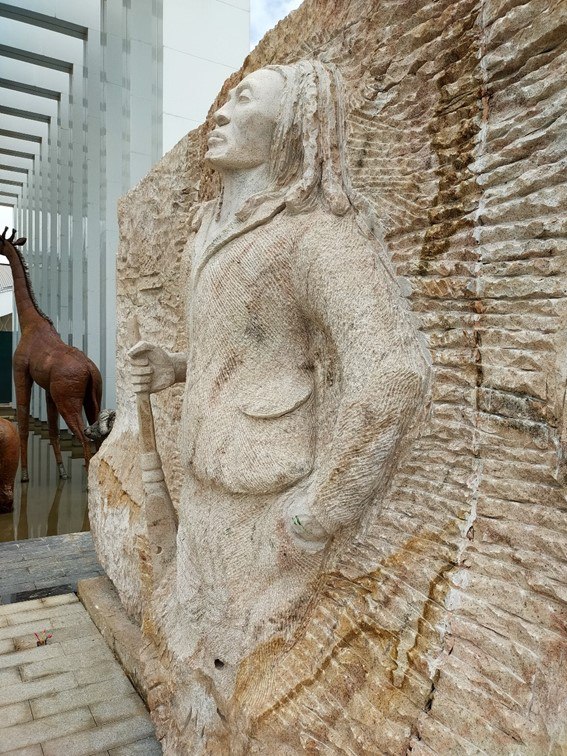
Source: Motondi (2024) Uhuru Gardens Museum- Nairobi
Mr. Gerald Motondi is among Kenyans honored with a presidential medal for installing historic sculptures in local and international arenas. He has sculpted and installed over 25 sculptures in Turkey, Russia, Canada, the United States, India, and South Korea. He is famously recognized for carving Mashujaa such as Dedan Kimathi and Mekatilili wa Menza from pink granite at Uhuru Gardens Museum. Uhuru Gardens is a historic site in Kenya, where the national flag was first raised to signify “Jamhuri,”, Kenya’s independence. At one event, President Uhuru Kenyatta applauded Motondi for the remarkable statue he unveiled at the English PointMarina in Mombasa.In his speech, President Uhuru mentioned Motondi as a “Shujaa,” who represented Kenyans at the Beijing Olympics Fine Art Exhibition and won the Olympic Torch Award.
It is vital to note that sculptures take various names of fine arts, such as statues, monuments, figurines, and public figure arts. The materials include wood, stone, bronze, metals, and cement. Professional sculptors are very skilled at capturing the unique personalities in sculpture. These skilled sculptors ensure they accurately capture the facial likeness, body posture, and proportions of the figure. Lecturers of Fine Art at Kenyatta University ascertain that statues are reservoirs of artistic knowledge and educational inspiration. The profound statues draw attention from a distance and trigger memories of either national unity or turmoil. The members of the public and tourists are astonished by the mastery of sculptures in public places. They also appreciate the serene environment and enjoy the breath of life around monuments. The body gestures of the sculpture communicate profound messages associated with vision, astuteness, failures, and achievements. Other statues are fashioned in traditional costumes and ceremonial military regalia that display authority and power.
REFERENCE
- Fisher, M. (2020, June 11). Confederate statues: In 2020, a renewed battle in America’s enduring Civil War. The Washington Post. https://www.washingtonpost.com/history/2020/06/11/confederate-statues-attacked-protesters-george-floyd/
- Pronczuk, M., & Zaveri, M. (2020, June 9). Statue of Leopold II, Belgian king who brutalized Congo, is removed in Antwerp. The New York Times. https://www.nytimes.com/2020/06/09/world/europe/king-leopold-statue-antwerp.html
- Odhiambo, P. (2024, September 16). Gerard Motondi: The Kenyan sculptor who chisels greatness in stone. TRTAfrika. https://trtafrika.com/lifestyle/gerard-motondi-the-kenyan-sculptor-who-chisels-greatness-in-stone-18208343
- Reagan, R. (1981). Inaugural address. Ronald Reagan Presidential Library. https://www.reaganlibrary.gov/archives/speech/inaugural-address-1981
- The New York Times. (2020, June 24). How statues are falling around the world. https://www.nytimes.com/2020/06/24/world/statues-falling.html
- Wango, K. (2021). Role of Statues in the Artistic Commemoration of African Political Leaders: Analysis of 20 Selected National Statues in African Countries. East African Journal of Interdisciplinary Studies, 3(1), 40-77. https://doi.org/10.37284/eajis.3.1.295
What's Your Reaction?
Mr. Wanyama Ogutu is a scholar in the Master of Arts (Fine Arts) program at Kenyatta University. He is also a practicing visual artist specializing in drawing, painting, and sculpture within, Nairobi, Kenya. He focusing in Painting with its’ philosophy, education and extension to Africa contemporary Art. Most of his artworks focus on interaction, environment, and education. Wanyama has a passion for fine art research; its philosophy, development, and relevance. He writes on profound academic topics, where he has presented and published in international journals and conferences around the world. He is a consultant in innovation and creative strategy on issues affecting our society. He is currently a part-time teacher at some TVET institutes within Nairobi.


